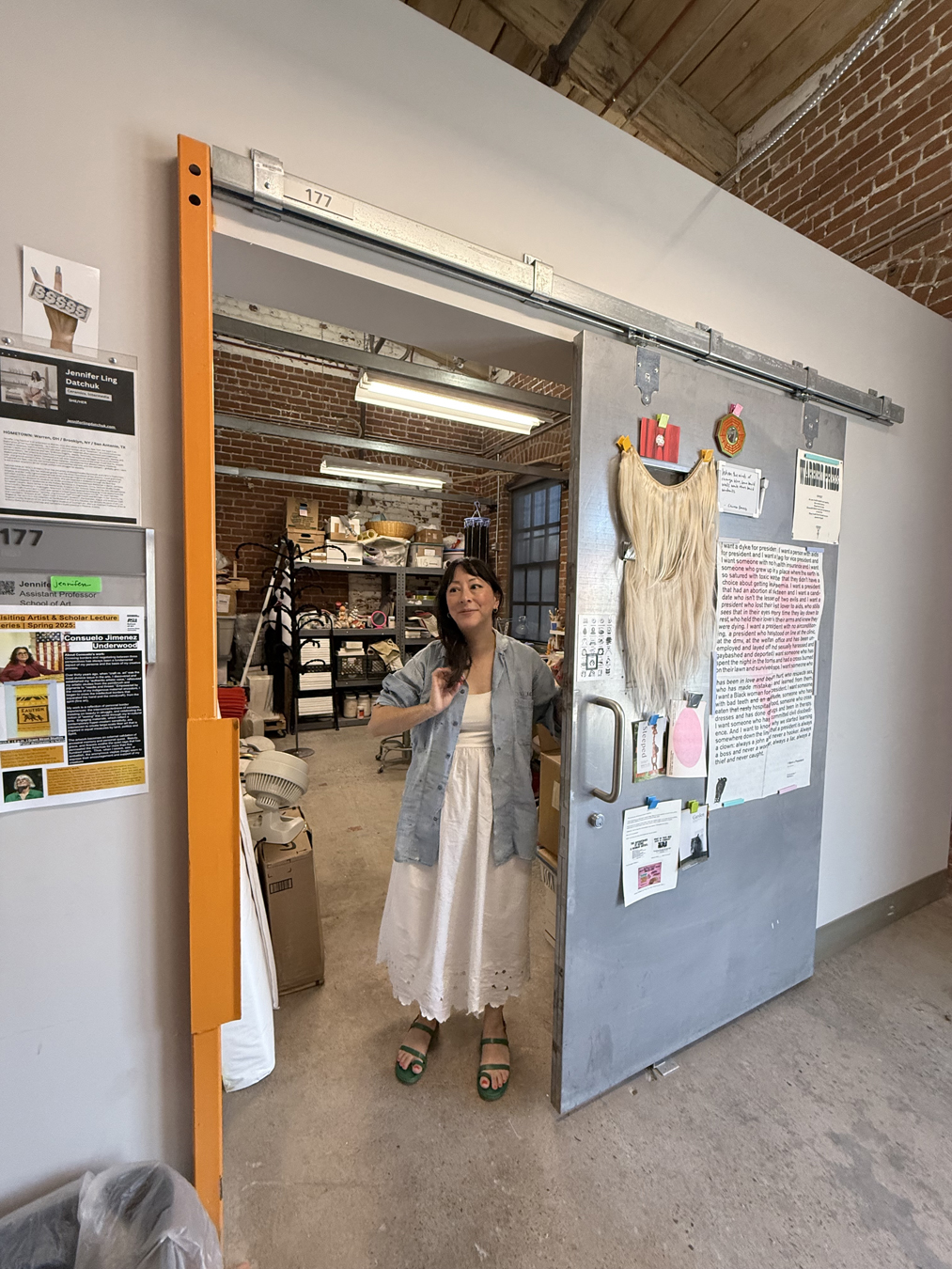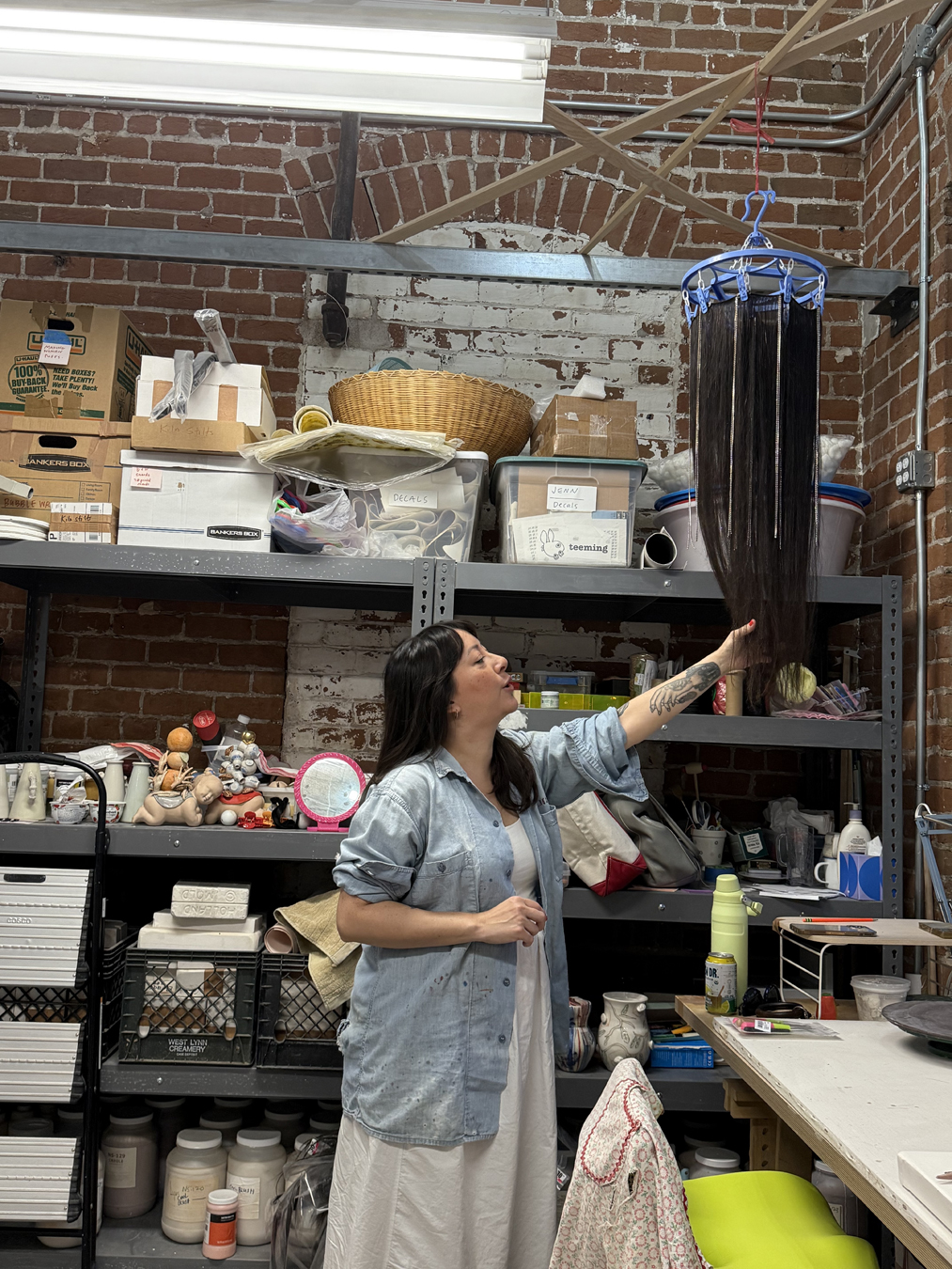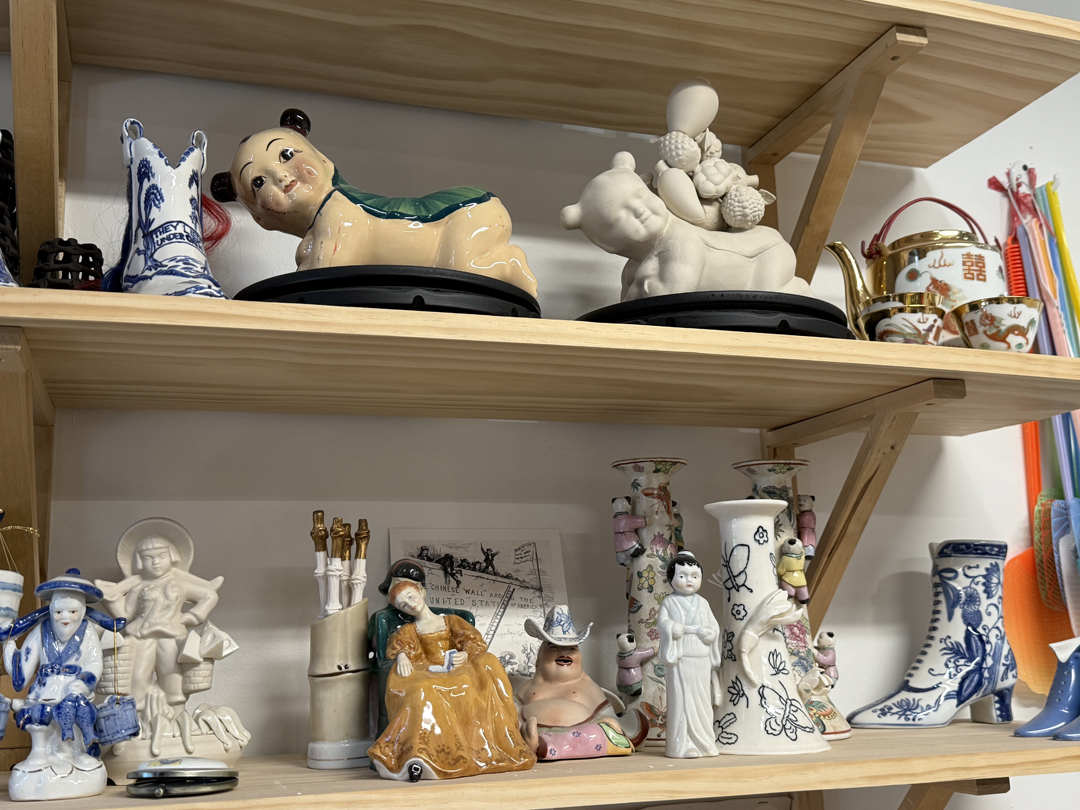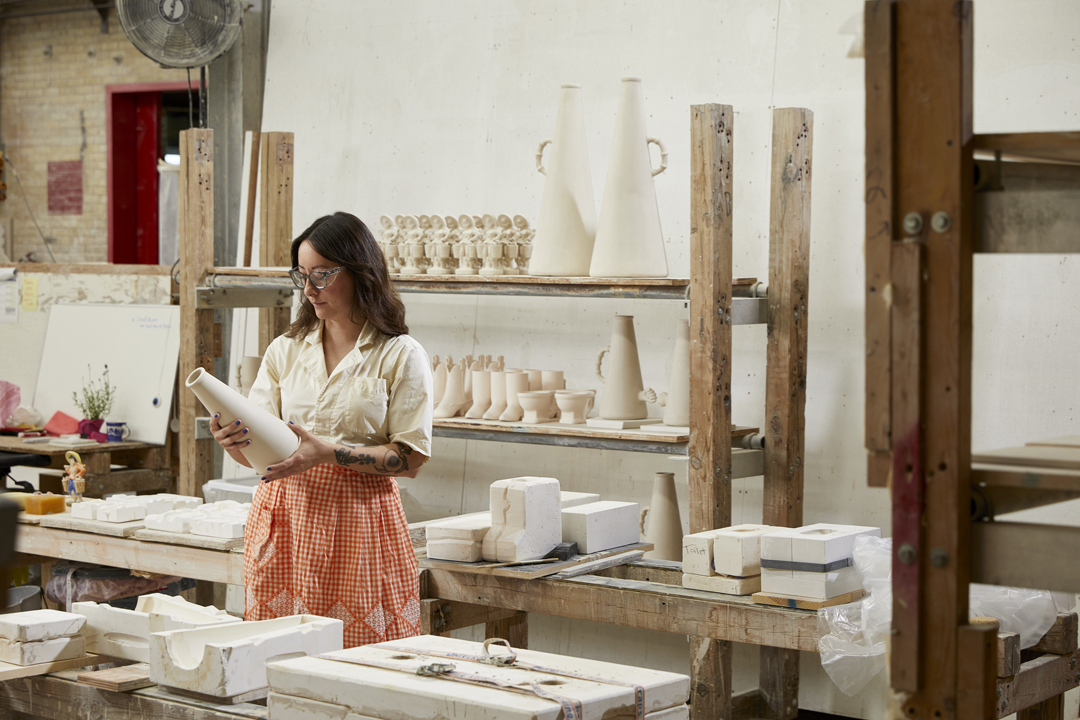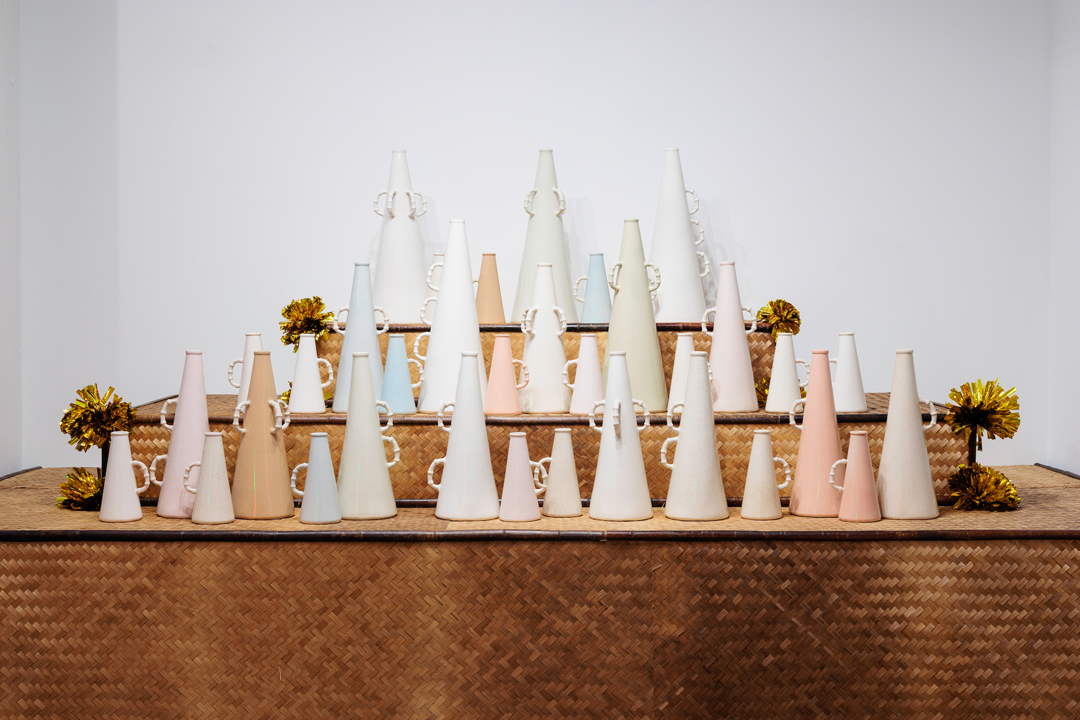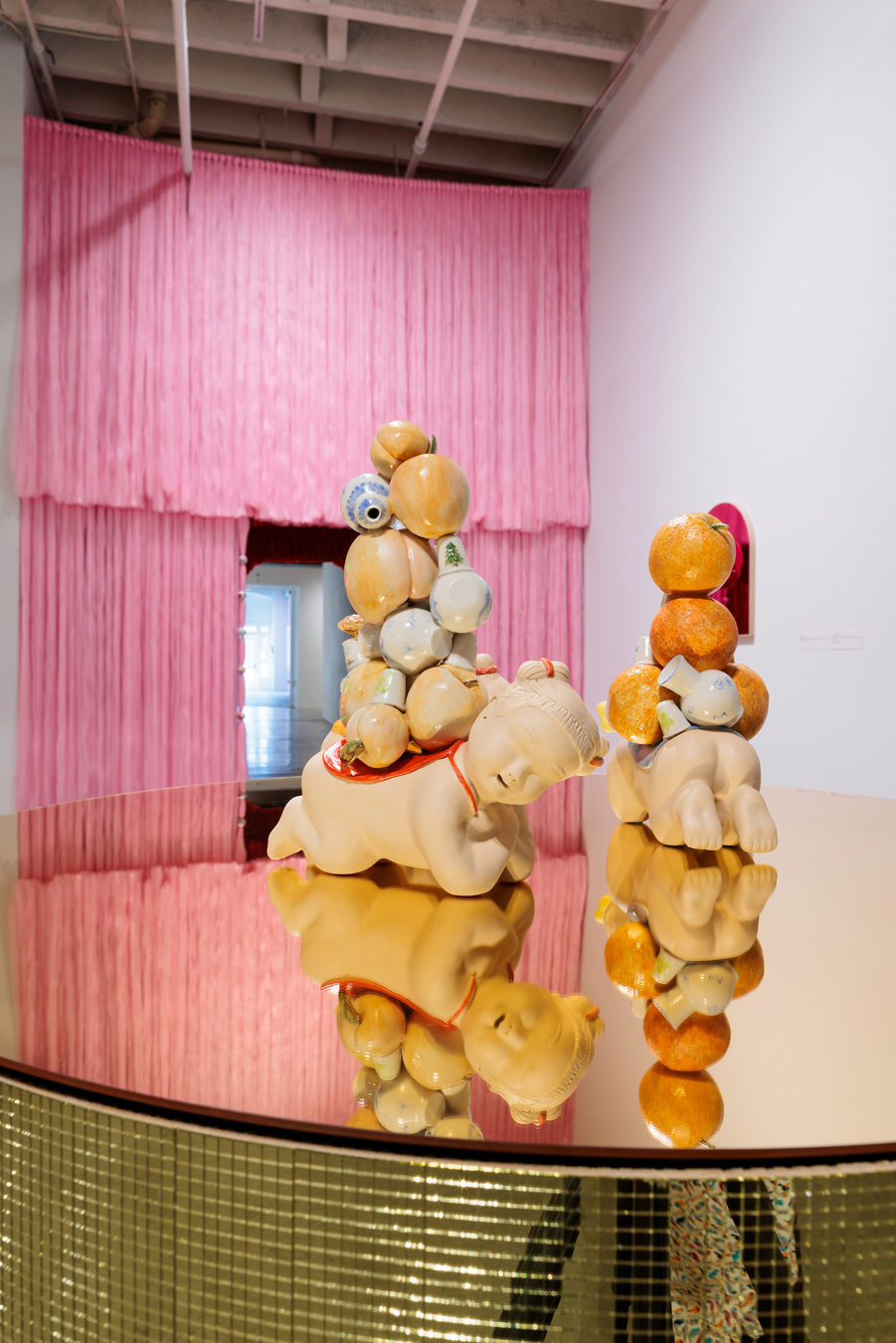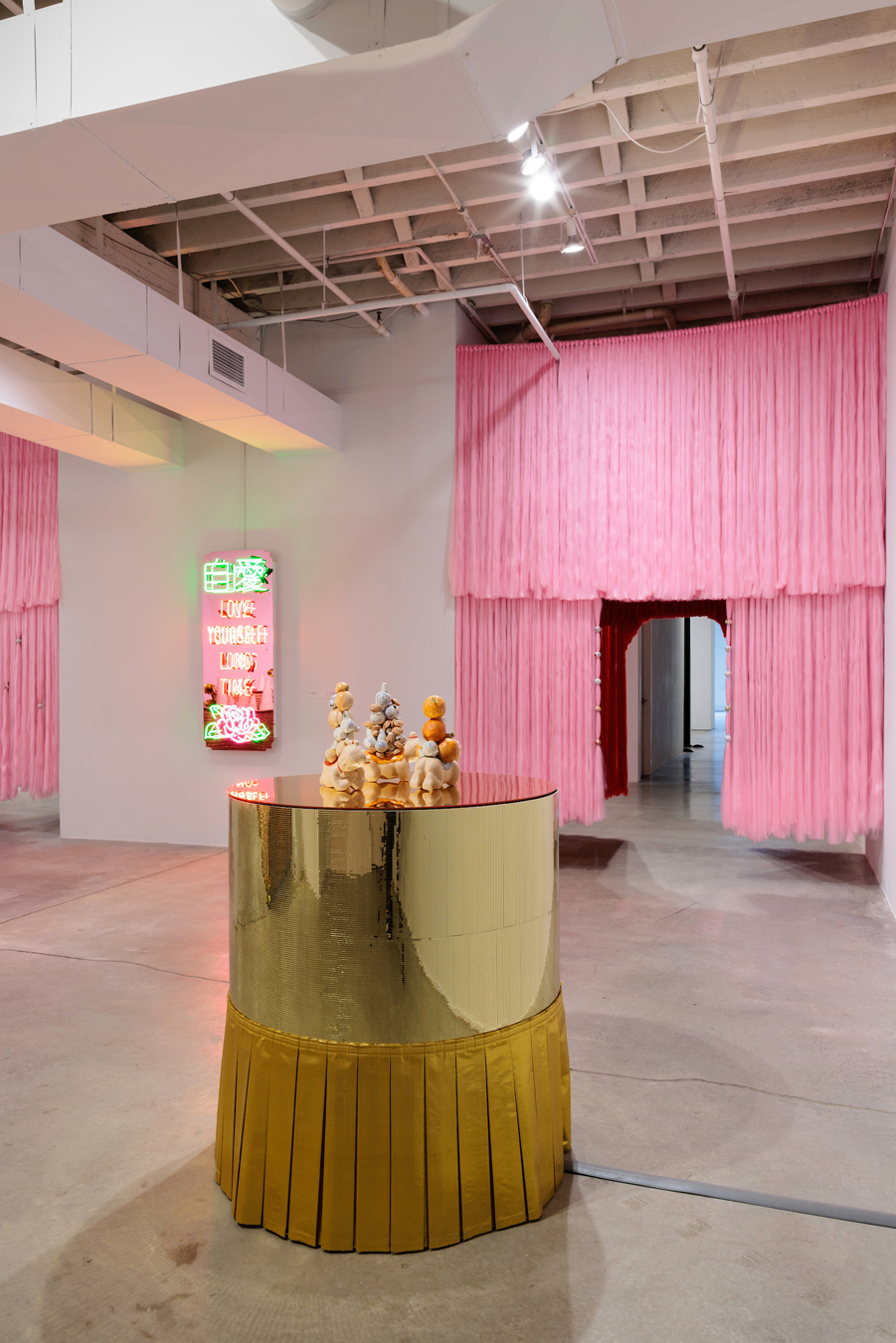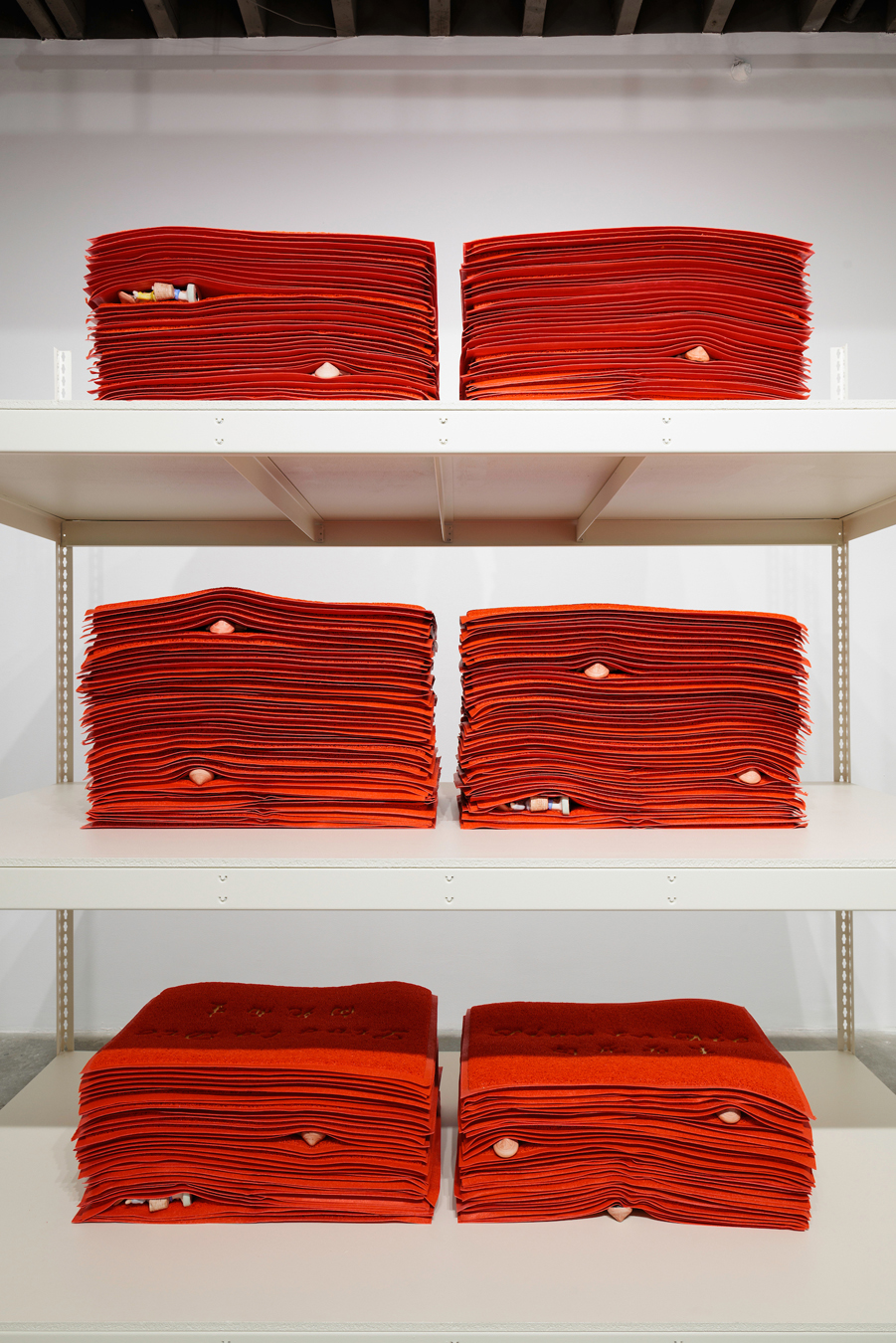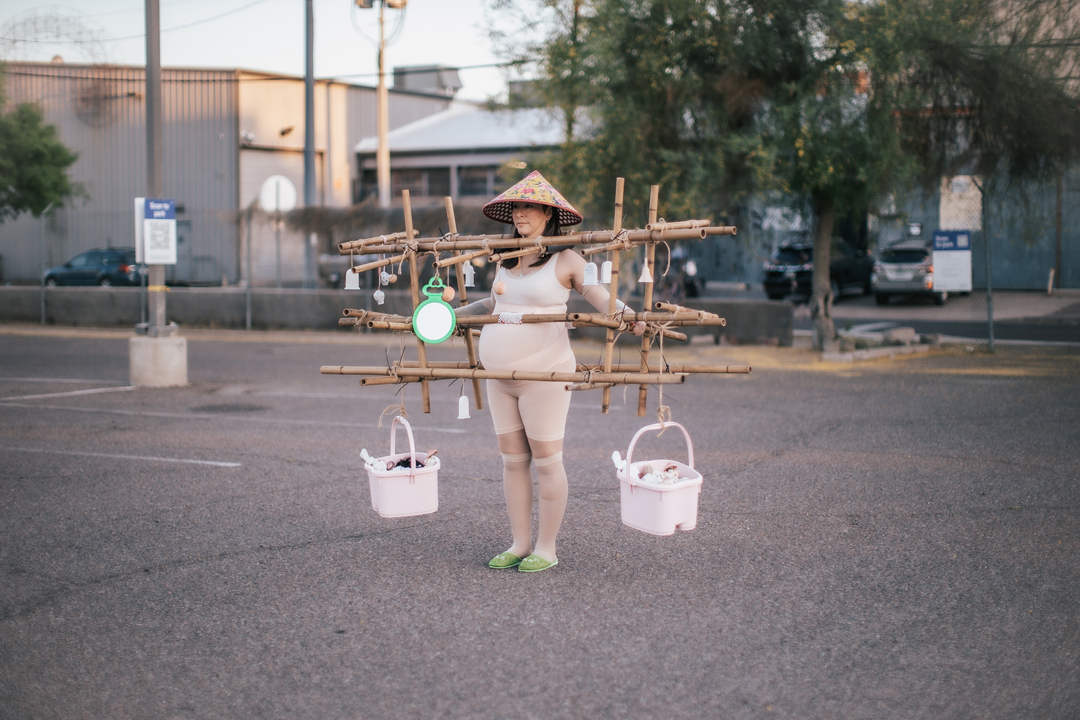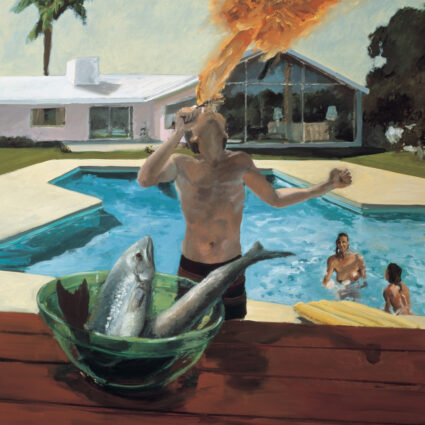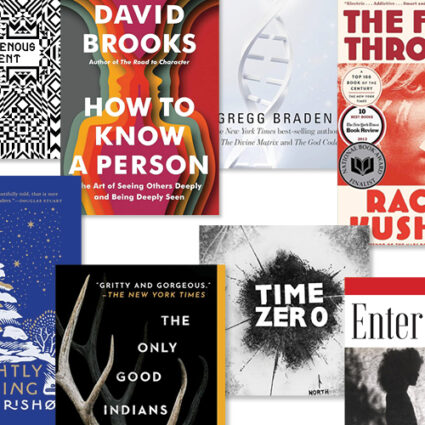Phoenix-based artist Jennifer Ling Datchuk’s live-wire practice is rooted in ceramics but branches into performance, installation—and biting political critique.
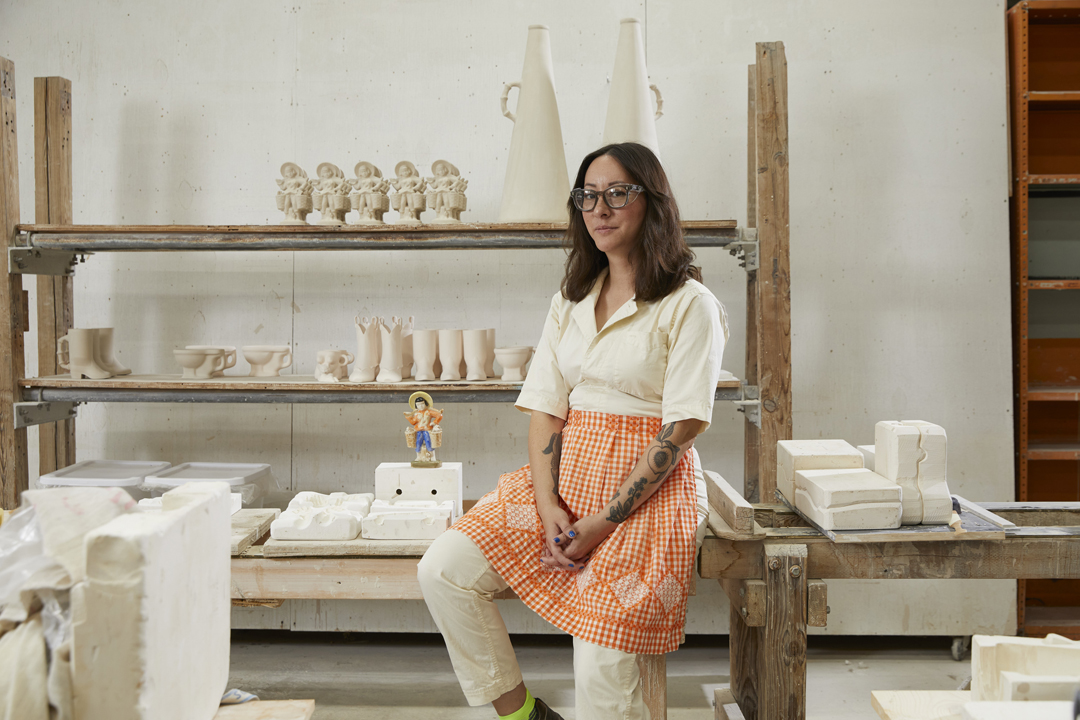
Plastic colanders as big as bicycle wheels. A tree trunk crafted of silky black braided hair. Wooden pallets covered in shimmering gold disco mirrors. A crib mattress topped with fat shards of blue-and-white pottery. They’re just a few of the objects that form a visual feast inside Jennifer Ling Datchuk’s art studio, where shelves hold an array of objects created or collected over time.
“I have so many different bodies of work, but they’re all related to material culture and thinking about the objects in our world,” Datchuk says of her creative practice. “I can spend hours in an antique mall, picking things up, reflecting on where they’re from, and daydreaming about the journey they took to get here. I think about their material and form, and the people and systems of labor that made them.”
I’m the daughter of immigrants from mainland China, so I grew up with immigrant ingenuity.
Datchuk’s creative space is part of Grant Street Studios in Phoenix’s warehouse district just south of downtown, where her husband and fellow ceramic artist Ryan Takaba has a studio just a few doors down.
Operated by Arizona State University, where Datchuk is an assistant professor of art in the ceramics department, the red brick building with bright orange architectural elements houses dozens of studios for art students, as well as exhibition space and common areas with shared equipment from kilns to 3D printers.
Datchuk’s studio sits adjacent to glass doors that overlook a defunct train track laying behind a massive sports venue that some local artists still blame for displacing a scrappy but burgeoning arts scene over thirty years ago. Here, Datchuk’s fascination for following the migration of porcelain through geography, cultures, and time feels particularly poignant, as do the critiques of capitalism and consumerism she often realizes with textiles and other materials associated with traditional women’s work.
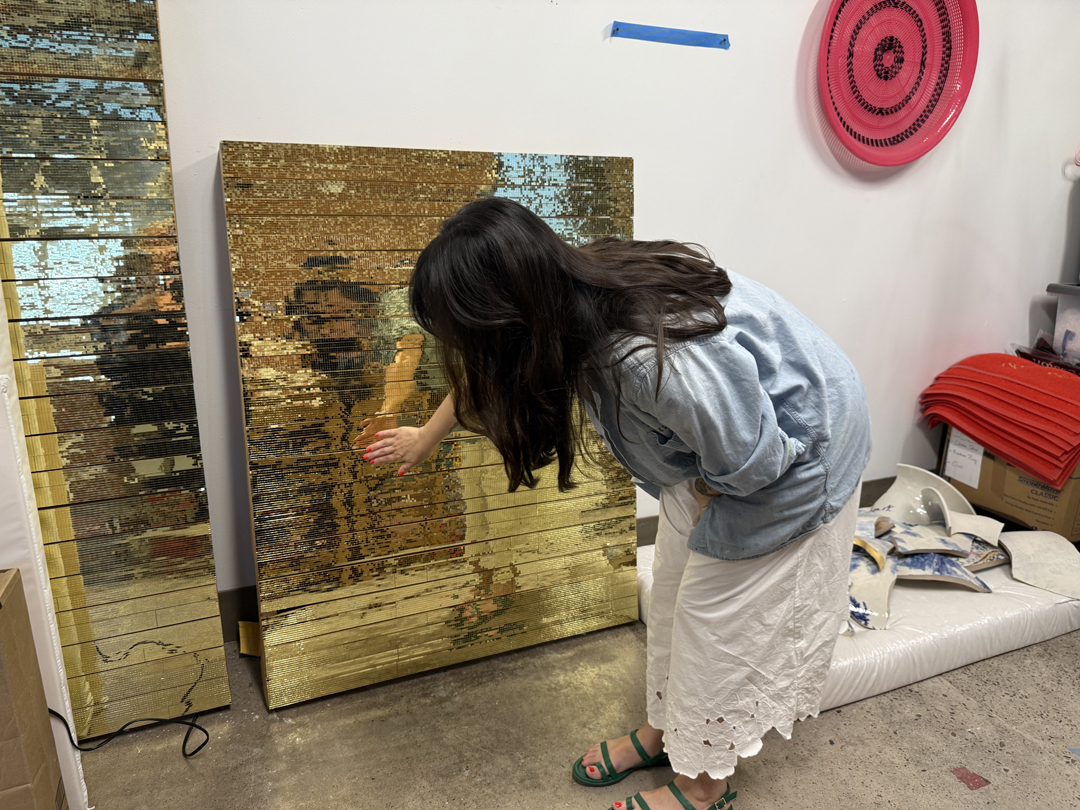
“I’m the daughter of immigrants from mainland China, so I grew up with immigrant ingenuity,” she explains, recalling how her grandfather wove nets for holding gourds using electrical cords he’d cut off small discarded appliances and her grandmother saved bakery boxes in case she wanted to send guests home with food.
The artist has made several trips to China, visiting the porcelain city of Jingdezhen, the largest hair factory in Xuchang, and other sites that inform the intersections of global and personal histories in her work. But she’s also drawn inspiration from myriad pop culture sources such as Beyoncé’s maximalist use of rhinestones.
The public and the private intersect a lot in my work, as do the personal and the political.
Throughout her creative practice, Datchuk uses sculpture, installation, and performance to address fragility, beauty, femininity, intersectionality, and other themes while living with her “layered identity” that includes being a woman, a Chinese woman, and an American.
During our mid-July studio visit, the artist’s space was brimming with works in progress destined for upcoming exhibitions, including her solo show Ripening at the New Mexico State University Art Museum in Las Cruces and the Clay as Care group show at The Clay Studio in Philadelphia.
For one exhibition, she’s applying smooth hair that looks like fringe along with artificial fingernails on small gold chains to the branches of a money tree. Long ago, the trees were so significant that people sought to be buried with them. Today they’re ubiquitous décor in restaurants and nail salons.

Meanwhile, Datchuk is also focusing on being a mother as her son Ocean (named for Takaba’s Hawaiian roots) nears his first birthday. Lately, she’s been spending about two hours a day at the studio and working on other creative projects, including writing about topics such as misogyny and ceramics, at home.
“The public and the private intersect a lot in my work, as do the personal and the political,” she explains.
Before moving to Arizona, Datchuk and her husband lived in Texas, where legislation limiting women’s bodily autonomy had serious implications. Datchuk experienced three miscarriages and the medically necessary abortions that followed, and underwent IVF that wasn’t covered by insurance.
Censorship is coming for us all, so the work we’re doing as artists feels even more important.
During the height of Covid-19, Datchuk made work responding to xenophobia surrounding the pandemic. Now, she’s witnessing the impacts of Trump’s ever-shifting tariff rhetoric, as she continues to examine the “social, cultural, and political systems that hold women back.”
Today, she’s showing pieces that question Western ideals of beauty in The Shape of Power: Stories of Race and American Sculpture at the Smithsonian American Art Museum in Washington, D.C., and Monstrous Beauty: A Feminist Revision of Chinoiserie at the Metropolitan Museum of Art in New York City.
After Donald Trump criticized the Smithsonian exhibition in a March 27, 2025, executive order titled “Restoring Truth and Sanity to American History,” Datchuk was glad to see the show stayed up. “Censorship is coming for us all, so the work we’re doing as artists feels even more important,” reflects Datchuk.
“Every day,” she adds, “this president says something that could become a new body of work.”
